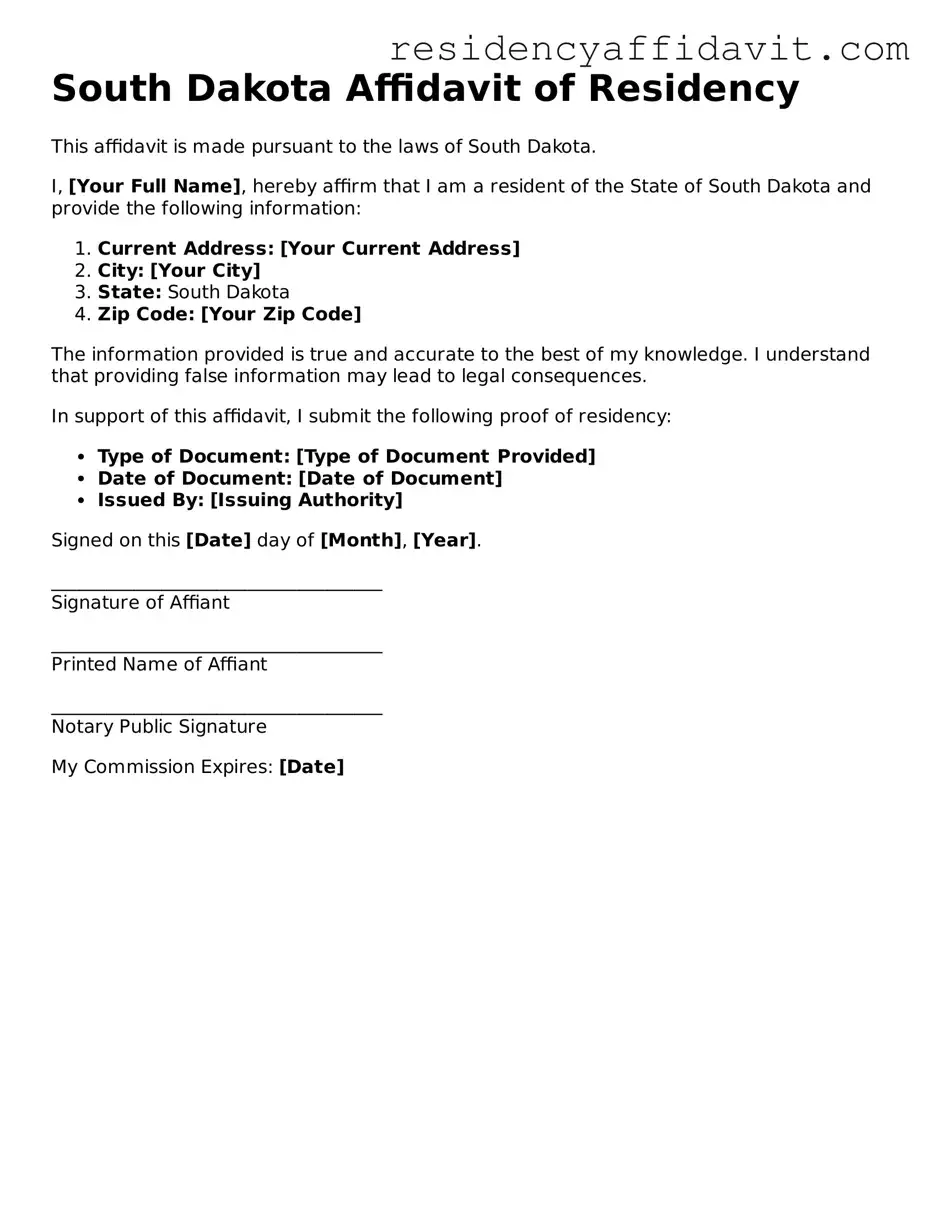Filling out the South Dakota Affidavit of Residency form can seem straightforward, but many individuals encounter pitfalls that can lead to delays or rejections. One common mistake is failing to provide accurate personal information. It's crucial to ensure that your name, address, and other identifying details are correct. Even a small typo can cause significant issues.
Another frequent error is neglecting to sign the form. Many people forget this important step, thinking that simply completing the form is enough. Without a signature, the affidavit is incomplete and cannot be processed. Always double-check that you have signed and dated the document.
In addition, individuals often overlook the requirement for witnesses. The affidavit typically needs to be signed in the presence of a witness. Failing to include a witness signature can invalidate the document. Make sure you understand the witness requirements before submitting your form.
Some applicants also make the mistake of not providing sufficient proof of residency. The affidavit may require supporting documents to verify your claims. Ensure that you include copies of utility bills, lease agreements, or other relevant documentation that clearly shows your residency.
Moreover, individuals sometimes use outdated forms. It's essential to check that you are using the most current version of the Affidavit of Residency. Using an old form can lead to unnecessary complications and delays in processing your application.
Another common oversight is failing to read the instructions thoroughly. Each section of the form may have specific requirements or additional information needed. Taking the time to read the instructions can help prevent mistakes that could otherwise slow down the process.
Additionally, some people rush through the form, which can lead to incomplete answers. Each question must be answered fully to avoid rejection. Take your time to ensure that every section is filled out accurately and completely.
It’s also important to remember that the affidavit must be notarized in many cases. Forgetting to have the document notarized can lead to delays. Always check if notarization is required and arrange for it accordingly.
Lastly, individuals sometimes submit the form without making a copy for their records. Keeping a copy is essential for your own reference and to track your application status. Always retain a copy of any important documents you submit.
